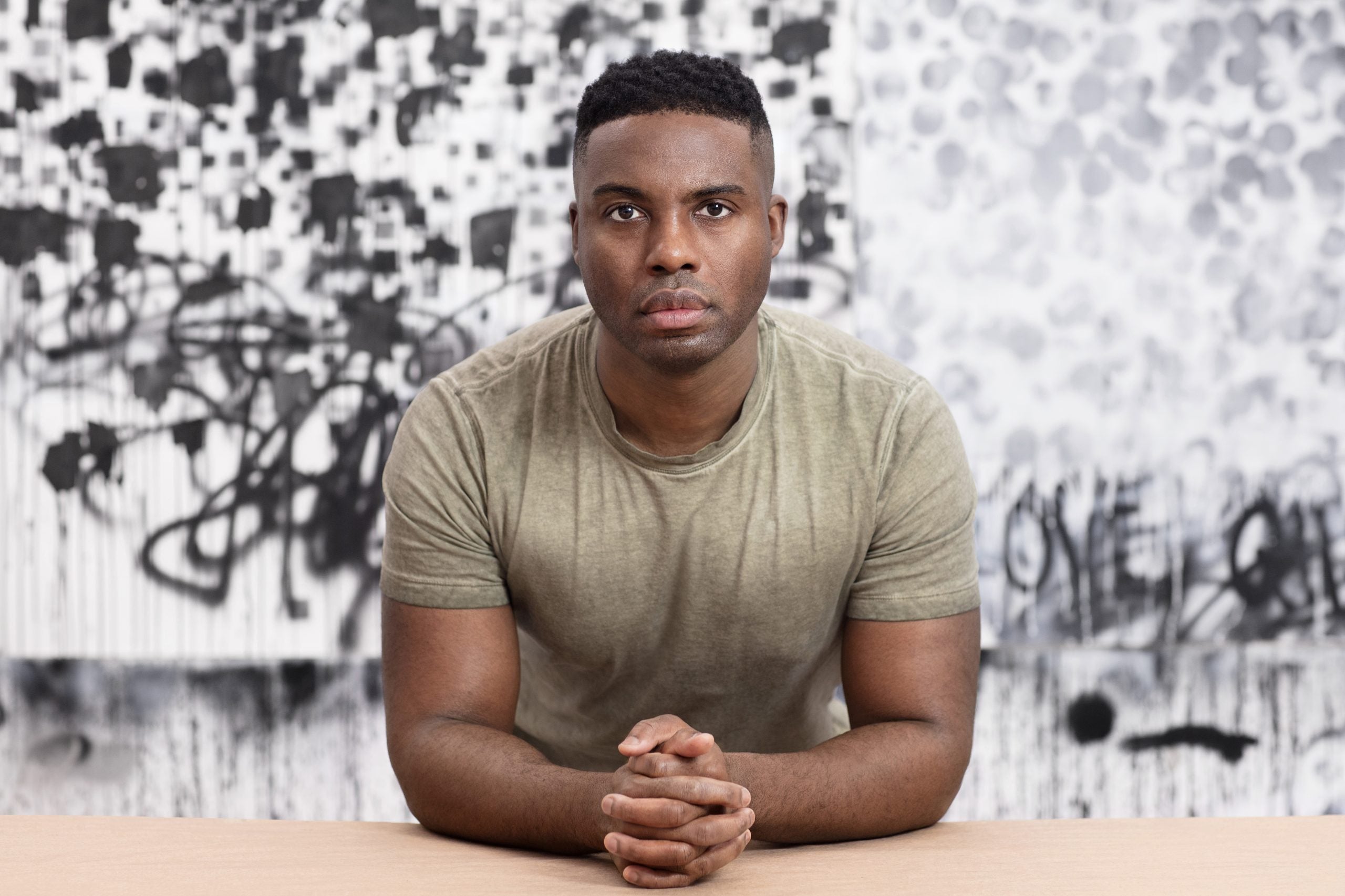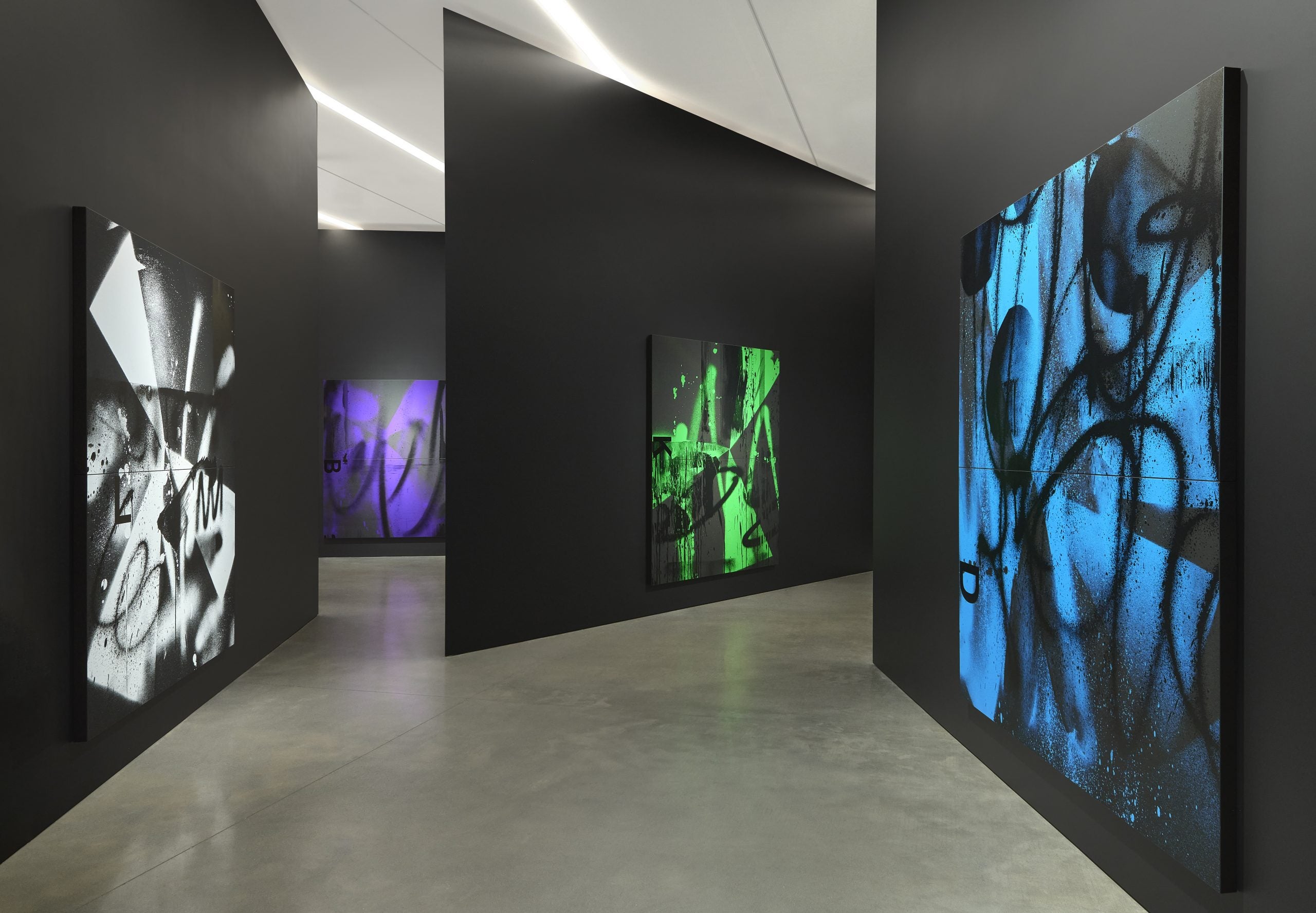Artist Adam Pendleton’s ‘An Abstraction’ Bridges The Gap Between Art And Audience


An Abstraction at Pace Gallery in New York serves as a homecoming of sorts for artist Adam Pendleton. In what is his first solo outing at the gallery in ten years, the show follows a series of significant solo exhibitions by Pendleton at museums around the world, giving audiences an overview of his recent work, and a glimpse into the mind of this conceptual creative.
In An Abstraction, the artist’s 12 paintings and 13 drawings exist within a large-scale construction that includes five black triangular forms. These sculptural walls will reorder the gallery into new, unexpected spaces and extend the visual language of the exhibited works. Pendleton is guided by “Black Dada,” an ongoing examination into Blackness and its relationship to abstraction.

“It is a space for me to operate from and within as an artist,” Pendleton says of the importance of Black Dada. “It’s a visual philosophy and also a structural device or tool that I utilize as an artist. It frames the work that I create and it’s also in that way a liberating force.” Blending the artist’s Black Dada and Untitled (Days) bodies of work, the new paintings and drawings in the exhibition feature a variety of strokes that blur the lines between painting, drawing, and photography.
On view at Pace’s 540 West 25th Street gallery in New York from May 3 to August 16, An Abstraction marks a continuation of Pendleton’s years-long journey of creating spaces of engagement, and pushing the boundaries of what one’s body—and mind—can truly do.
ESSENCE: Adam, can you speak to me about the type of emotions that you’re feeling in being able to exhibit your work again at Pace Gallery for the first time in a decade?
Adam Pendleton: I guess the most immediate response would be to say I am contemplative and excited.
Why contemplative? Why that emotion outside the excitement?
I think one of the most exciting things as an artist is to look back on the visual timeline of your work, and each exhibition is an opportunity to do so. But when you haven’t had an exhibition in a particular place, and in this instance my hometown, for a considerable amount of time, it occasions a different kind of reflection.
I have such a touch point from looking at the exhibition I did in April 2014 at Pace Gallery in New York, in relation to the exhibition I will stage now in, well, May 2024 at Pace Gallery New York. Really a solid decade. It’s a real concrete way to have a view of what was and what is—and how they relate of course, which is also interesting.
In the video discussing your upcoming exhibition at Pace Gallery, you said that painting is about awareness, but you also said that some of your work is intentional, but sometimes your art is created when you let go and be taken by things beyond your control. How do you know when the time is right to cede control to those outer forces as opposed to taking the reins itself when you’re creating?
Well, the beautiful thing is I don’t know. And that’s what’s so interesting about painting is how in its physical act, but also in its theoretical dimensions it’s really about that which is elusive. And that’s what I love about it is that in painting to know is to not know and to not know is to know. It’s full of these, it’s this strange alchemy of action and intention, this meaningful relationship between your body and intention, this meaningful relationship between really who you are and what you’re capable of. And then beyond that, there’s the larger space of just the history of the medium, which is also interesting to interact with and insert one’s work and self within that space as well.
You also spoke about one’s body. Sometimes our bodies fail us and sometimes they can exceed our expectations. With creativity however, I think that has no limits. Do you see limits with your art at times? When do you push the boundaries of your creativity as opposed to letting things be as they are?
Well, I’m always trying to push past or push on to the next thing. And so, in a strange way, I’m seeking to operate without limits or at least with beyond known limits, if that makes sense. I’m driven by a perpetual curiosity of what is possible without defining what is possible at any given moment.
Now, a few years ago you published a book, The Black Dada Reader. Yes. Can you explain the concept of it?
Well, I think the simple way to explain Black Dada is that it is a space for me to operate from and within as an artist. It’s a visual philosophy and also a structural device or tool that I utilize as an artist. It frames the work that I create and it’s also in that way a liberating force.
You’ve been all over the world with your work. What do you find uniquely special about the New York art scene as pertained to other places in the world?
Well, I think it is a particularly international city, so a lot of artists, including myself, who are showing in cities all over the world often also always have exhibitions in New York as well. I think that, and that’s in visual arts, but that’s in music and dance as well. I think that’s a particularly unique perspective when you’re able to have so many people who are practicing particular disciplines, painting, drawing, music, dance, descend on one city. That’s not always the case. I mean you can be in a major city, but not everybody at some point comes there to do something. And I think New York is still decidedly unique in that way.
You said earlier, you want to push the boundaries of what your art can be and what your creativity could be. As a black artist, what type of restrictions have you encountered throughout your career?
I think one of the only restrictions I think is when any kind of distinction is perceived as either a limit or as defining. That is to say I want to create and have the agency to be self-defining, to identify, communicate, and represent myself and my work as I see useful and necessary, not as someone else might see useful or necessary.
Source link : www.essence.com
























































